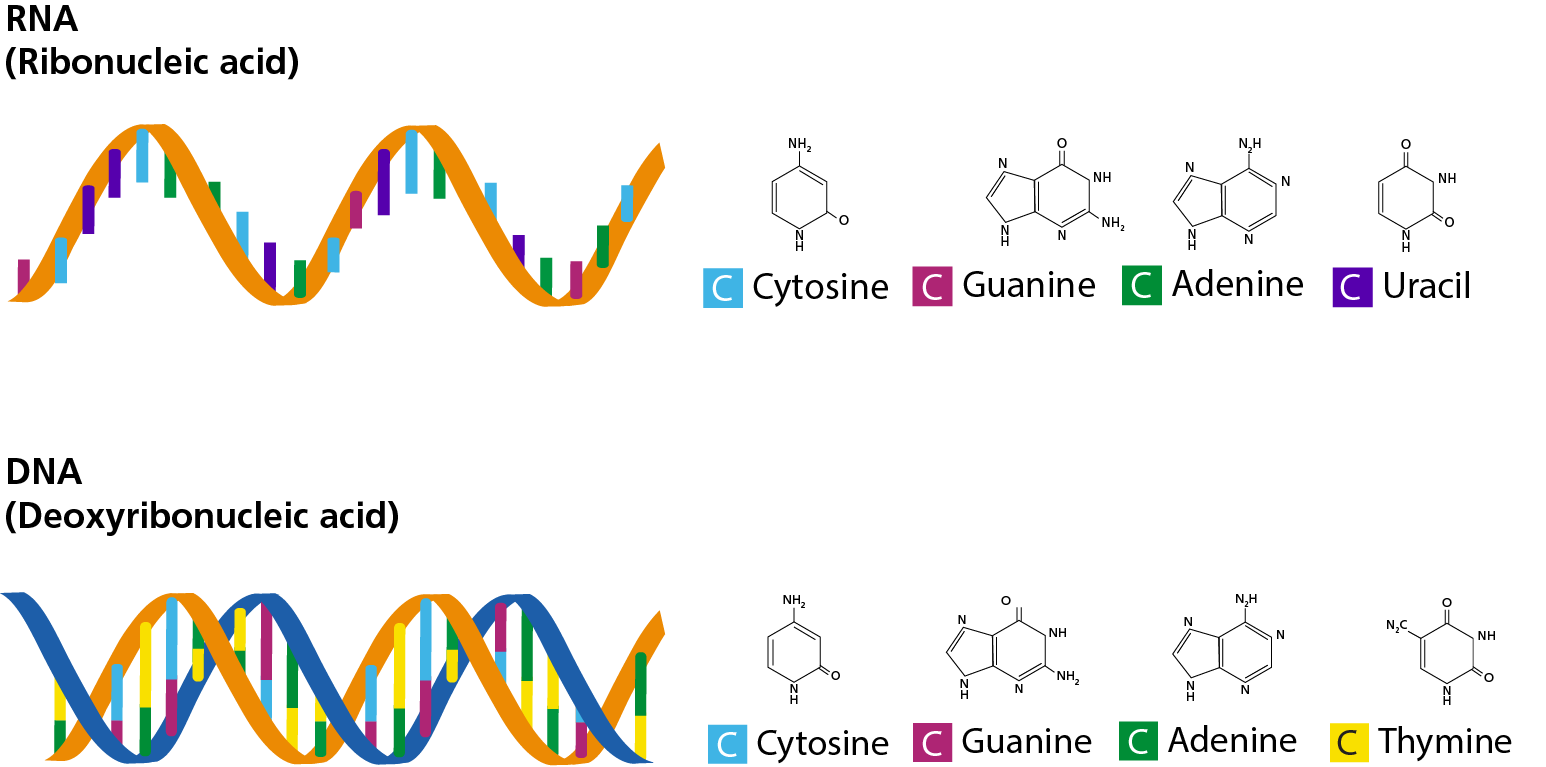RNA
Ribonucleic acid (RNA), like DNA, is a nucleic acid. In RNA, however, the sugar is ribose and the chemical base thymine (T) is replaced with uracil (U).
RNA structure
An RNA molecule is typically single-stranded, unlike DNA which is double-stranded (see figure 1). RNA has the ability to carry the same genetic information as DNA, although RNA is less stable.

Figure 1: The structure of RNA and DNA.
Protein production role
RNA is crucial for protein production. As DNA cannot leave the nucleus the relevant sections are transcribed into messenger RNA (mRNA) and transported to the ribosomes where proteins are produced. At the ribosome, transfer RNA (tRNA) facilitates the addition of the correct amino acids to the polypeptide chain which ultimately becomes the protein. The ribosomes themselves are formed of proteins and ribosomal RNA (rRNA).
An additional type of RNA, known as signal recognition particle RNA (SRP RNA), is involved in the control of translation and sorting of membrane and secreted proteins.
RNA sequencing
By sequencing RNA, it is possible to establish which genes are actively producing proteins and which are not. This can be useful in identifying aberrant gene activity and potential drug targets to inhibit or enhance gene activity to alter gene expression.
RNA as a genome
In addition to its role in protein production in eukaryotes, some viruses, including influenza, polio and measles, have RNA genomes.
Key messages
- RNA is a single stranded nucleic acid molecule that is crucial in protein production.
- RNA’s chemical bases are different to DNA, they are CAGU.
- Sequencing RNA can help establish which genes are active, which can help identify appropriate drugs.
Resources
For clinicians
- NHS England’s Genomics Education Programme: Genomics 101: From Genes to Genome